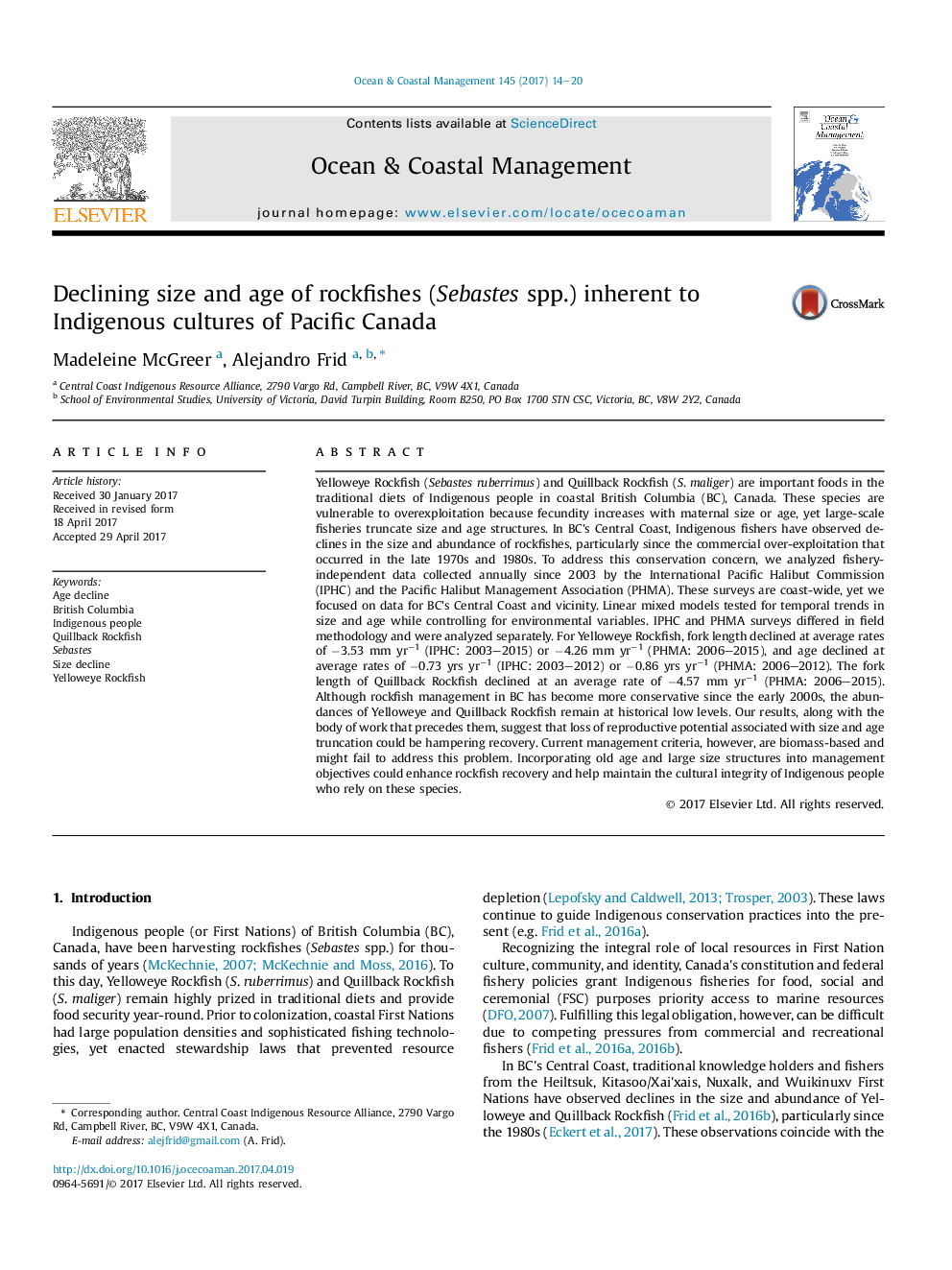| Article ID | Journal | Published Year | Pages | File Type |
|---|---|---|---|---|
| 5473900 | Ocean & Coastal Management | 2017 | 7 Pages |
Abstract
Yelloweye Rockfish (Sebastes ruberrimus) and Quillback Rockfish (S. maliger) are important foods in the traditional diets of Indigenous people in coastal British Columbia (BC), Canada. These species are vulnerable to overexploitation because fecundity increases with maternal size or age, yet large-scale fisheries truncate size and age structures. In BC's Central Coast, Indigenous fishers have observed declines in the size and abundance of rockfishes, particularly since the commercial over-exploitation that occurred in the late 1970s and 1980s. To address this conservation concern, we analyzed fishery-independent data collected annually since 2003 by the International Pacific Halibut Commission (IPHC) and the Pacific Halibut Management Association (PHMA). These surveys are coast-wide, yet we focused on data for BC's Central Coast and vicinity. Linear mixed models tested for temporal trends in size and age while controlling for environmental variables. IPHC and PHMA surveys differed in field methodology and were analyzed separately. For Yelloweye Rockfish, fork length declined at average rates of â3.53 mm yrâ1 (IPHC: 2003-2015) or â4.26 mm yrâ1 (PHMA: 2006-2015), and age declined at average rates of â0.73 yrs yrâ1 (IPHC: 2003-2012) or â0.86 yrs yrâ1 (PHMA: 2006-2012). The fork length of Quillback Rockfish declined at an average rate of â4.57 mm yrâ1 (PHMA: 2006-2015). Although rockfish management in BC has become more conservative since the early 2000s, the abundances of Yelloweye and Quillback Rockfish remain at historical low levels. Our results, along with the body of work that precedes them, suggest that loss of reproductive potential associated with size and age truncation could be hampering recovery. Current management criteria, however, are biomass-based and might fail to address this problem. Incorporating old age and large size structures into management objectives could enhance rockfish recovery and help maintain the cultural integrity of Indigenous people who rely on these species.
Related Topics
Physical Sciences and Engineering
Earth and Planetary Sciences
Oceanography
Authors
Madeleine McGreer, Alejandro Frid,
